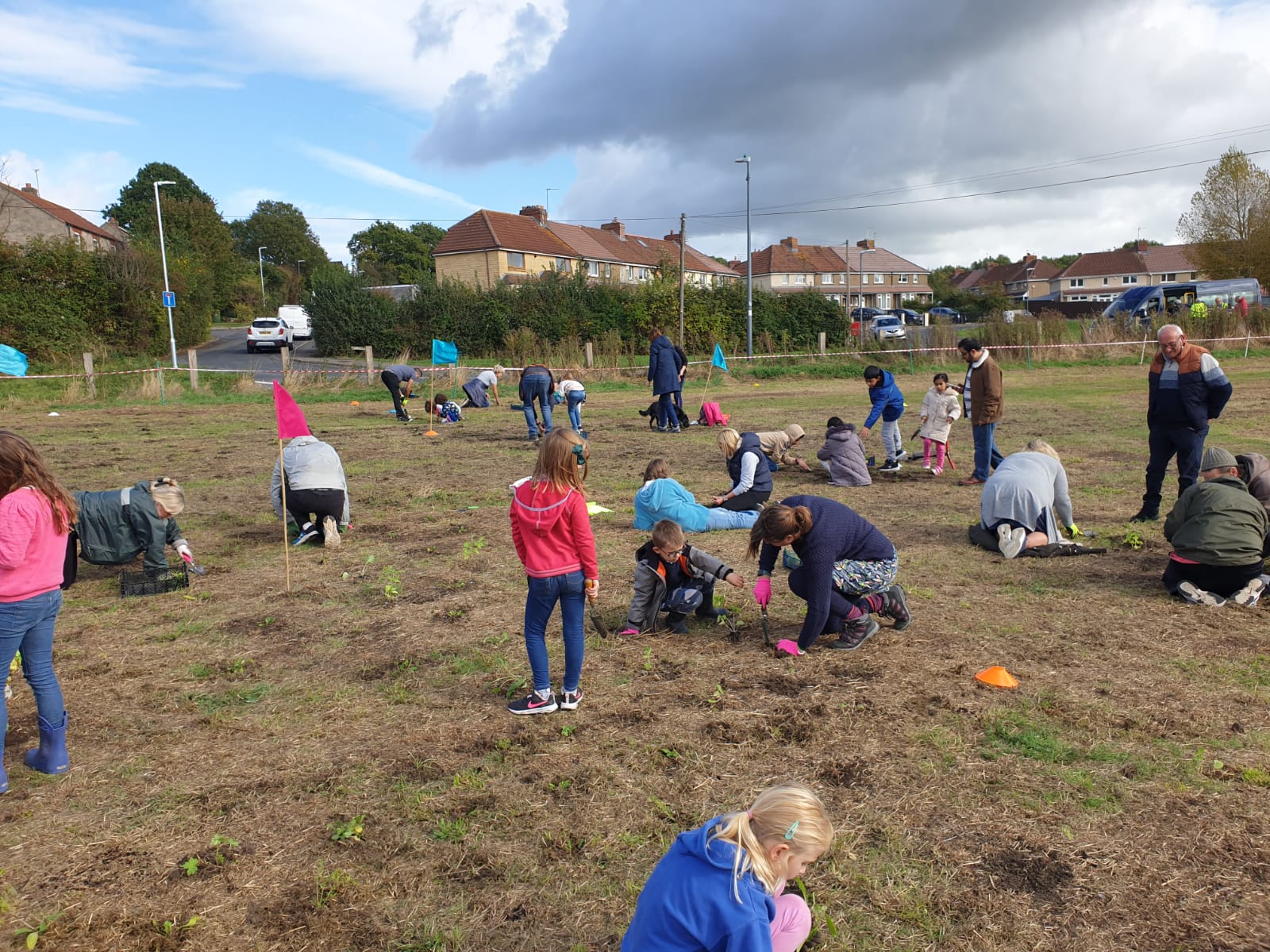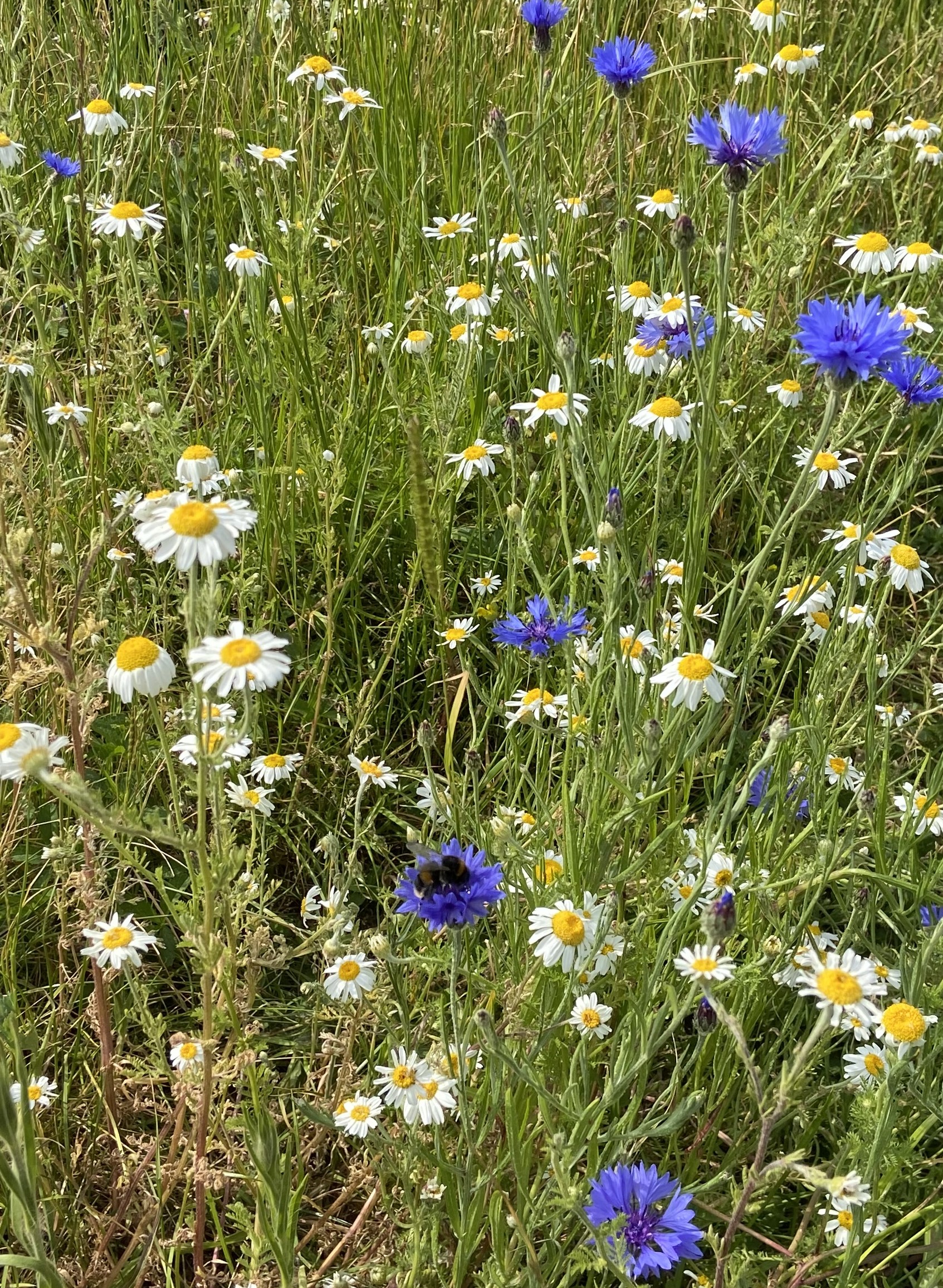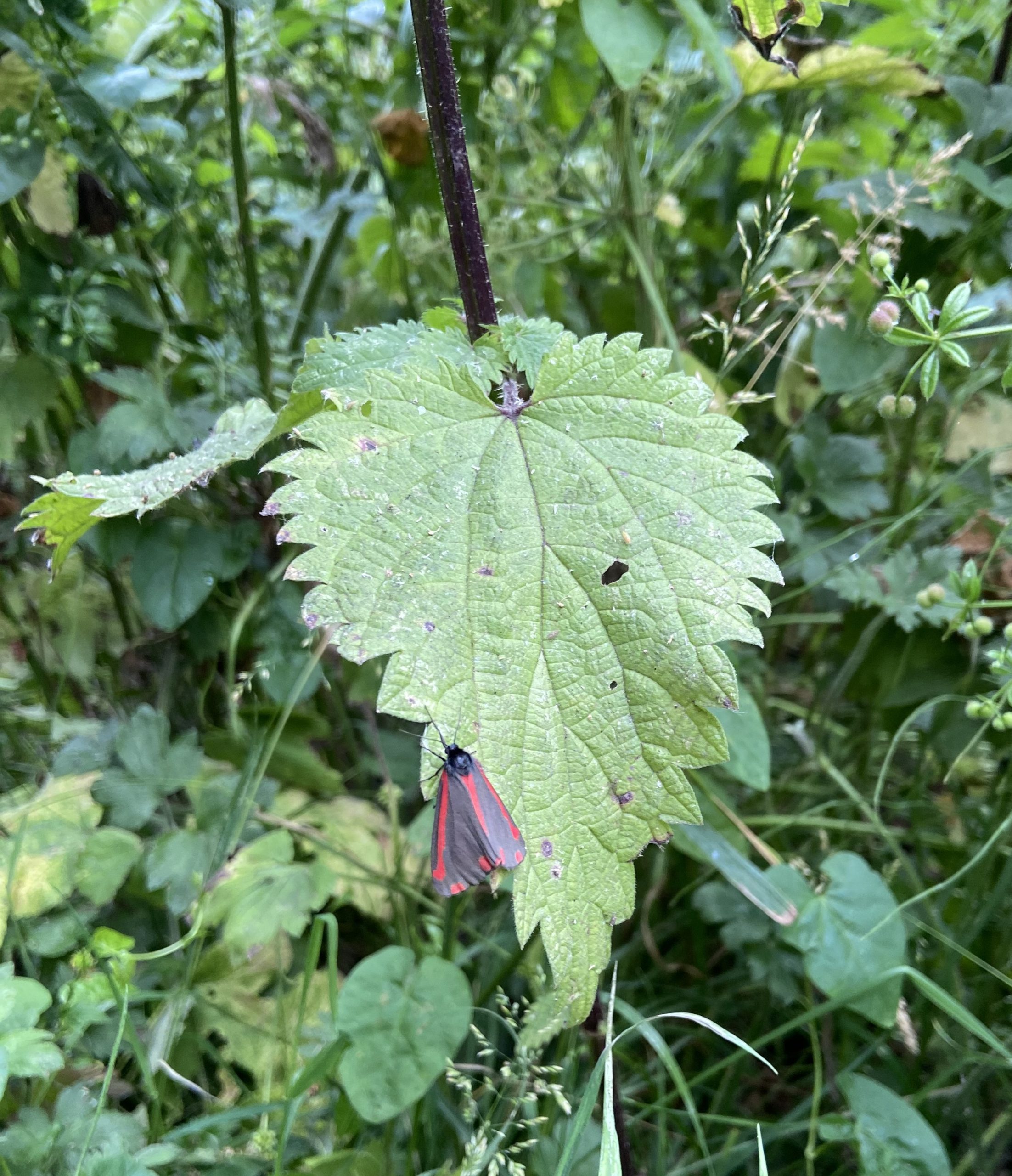This is the north part of Siston Common. It is historically and ecologically very important. It is part of Siston Parish and just one part of Siston Common which was split when the A4174 Ring Road was constructed.
It was once a part of Kingswood Forest (which covered much of what is now South Gloucestershire and reached as far west as Bristol Castle). The northern forest boundary can be traced back to the 8th century and the south east boundary to the 10th century at least. The basic use for hunting is thought to go back to pre Saxon times. It was disafforested in 1228 and the Constable of Bristol Castle held the role of Chief Ranger of Kingswood Chase (covering the area now known as Kingswood) on behalf of the King from 1228 until 1631. Local gentry later shared the Chase amongst themselves, taking ‘Liberties ’ and by 1734, the Chase passed permanently out of the hands of the Sovereign.
The Warmley Brook flows behind the trees you see in front of you and there is a path alongside it with more wildflowers. The Warmley Brook marks the boundary between the ‘Liberties’ and Siston Common. It was shown on earlier maps as ‘Siston’s Brook’ and Siston Brook until at least the late 19th century.
This has been common land for hundreds of years and there are Byelaws to protect it which you will see on wooden posts at the boundaries.
Common land has never been enclosed; but years ago, cattle would have been grazed here by Commoners who had grazing rights. Behind you in Lawrence Close, the green area is the site of a medieval cattle enclosure. The new houses on Syston Hill Farm were built on a site that was used for different things over the centuries: a farm, a coal mine and an abattoir. Coal has been dug and mined locally in the past; where the houses in Syston Hill Farm are now, and also near Hot Water Lane. Many of the first settlers in the forest area were people who came to mine coal and who built squatters cottages nearby.
In the mid 1970s, several feet of soil was added to this area and the area opposite The Horseshoe Public House which is through the underpass to your left. The Common has been grazed but never been ploughed, so there was already a greater number of species of grasses and plants than if it had been farmed.
The Commons in Siston are at the heart of an initiative called Common Connections which is a four year project by South Gloucestershire Council, with long term aims to combat climate change, increase the wildlife and wildflower populations and restore and enhance our local natural landscapes.
In October 2022 this part of the Common was planted by local people with thousands of extra wildflowers and seeds grown locally, to create a meadow to attract pollinators and build a diverse habitat for many creatures. Wild Cherry and Wild Service trees were planted on the Common. Nature loves this kind of habitat and we hope you will too.
The community orchard was planted in December 2022 with a mixture of apple, plum and pear trees ; all heritage varieties. The fruit will be free to pick when it is ripe.
The ponds have been created for amphibians, to give them a protected space; please do not take dogs there or let them go into the ponds.
What can you see and hear today?
The brambles, Blackthorn, Cherry and other trees, bushes and scrub are safe places for birds to nest. They also provide cover for hedgehogs, mice, voles, squirrels, Roe deer and foxes. They provide food for caterpillars so you may see Butterflies on various plants including the thistles and nettles. Walk along the paths and spend time sitting on the benches. What birds can you hear and see? How many different pollinators can you spot? The wildflowers that were planted attract more pollinating insects and produce seeds which will make food for other creatures and so increase the range and numbers of birds and mammals in this area.
The football pitch in the middle is part of the common which has been allocated as a space for residents and visitors to use for recreation. The grass is cut shorter there.
We hope that you enjoy this precious green space. Please adhere to the Byelaws. Please do not ride any bikes, motor or electric bikes or quadbikes onto the Common because they damage it.
Please keep to the paths and put your dog’s poo and any litter in the bins. Litter harms wildlife, doesn’t biodegrade for many years and is unsightly.
Siston Common must be protected forever, for all future generations of humans and wildlife. Thank you for visiting and helping to protect it.



